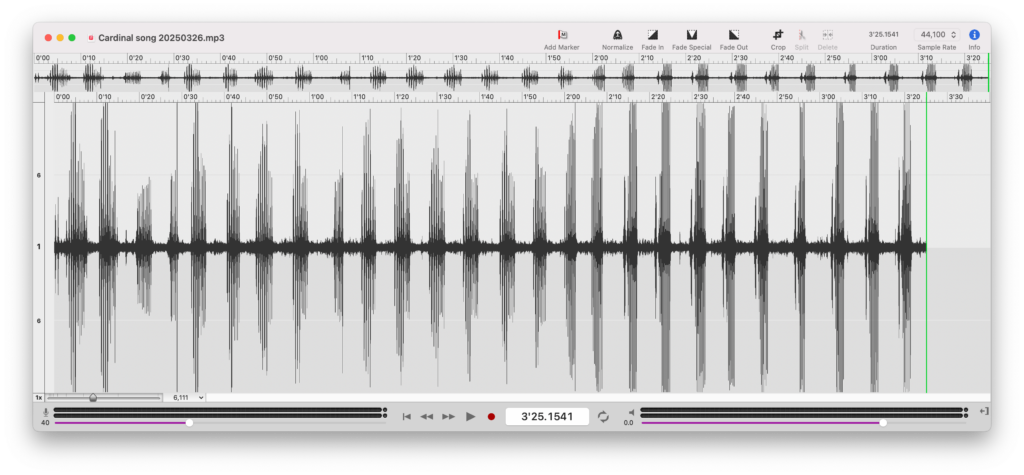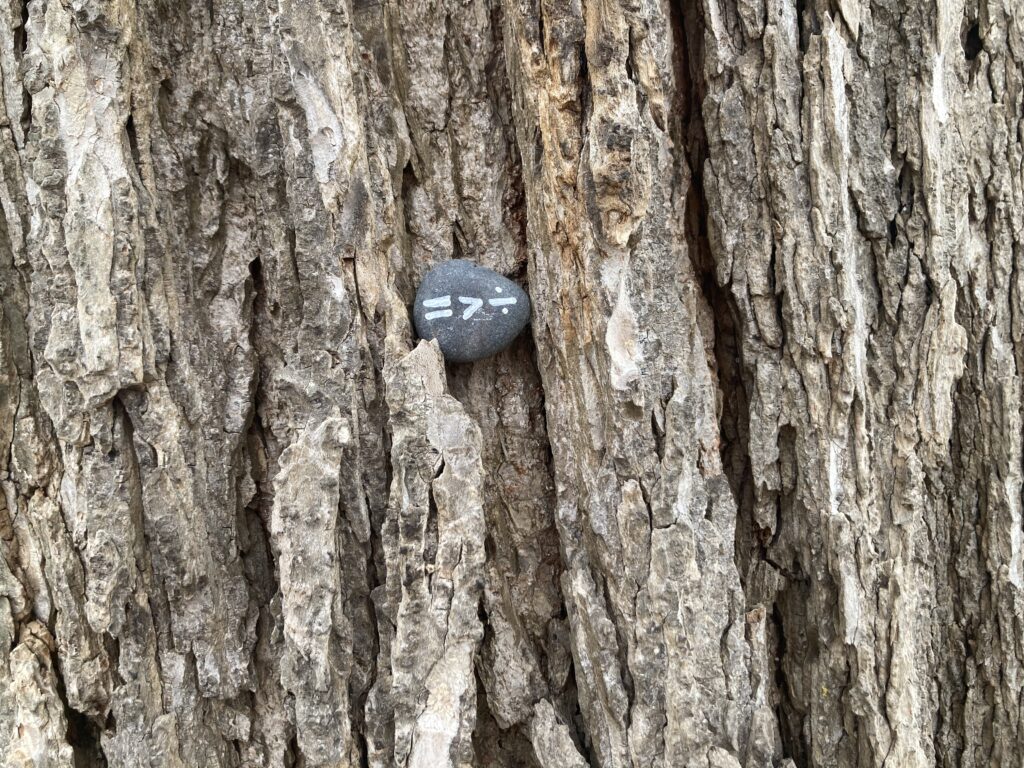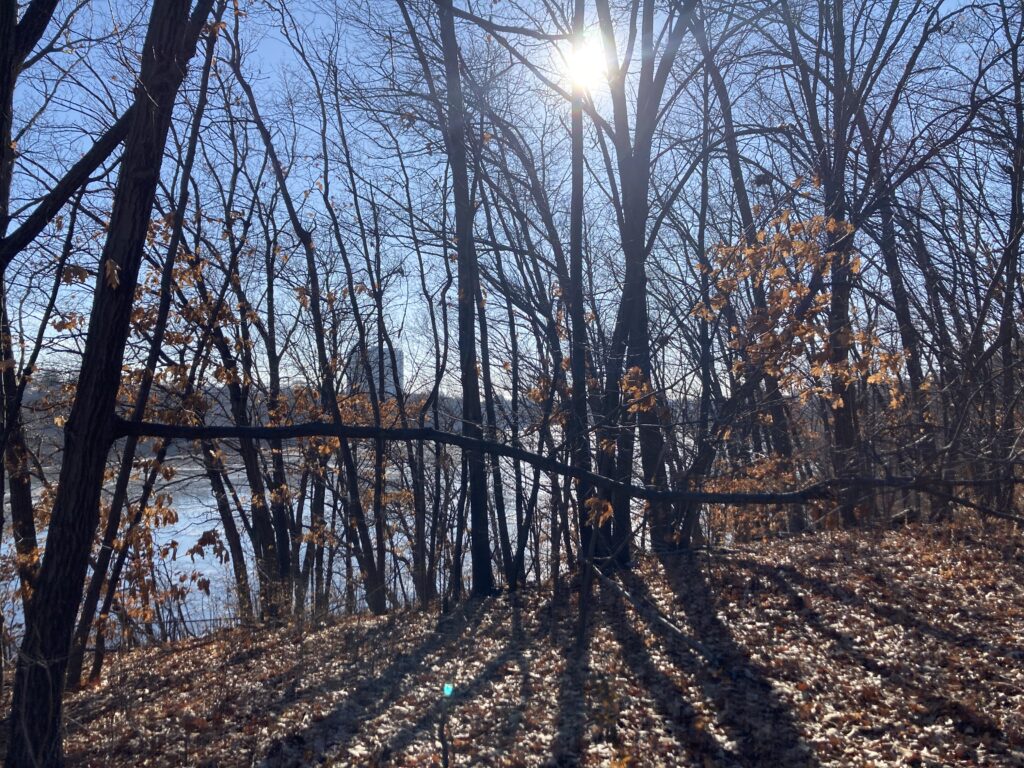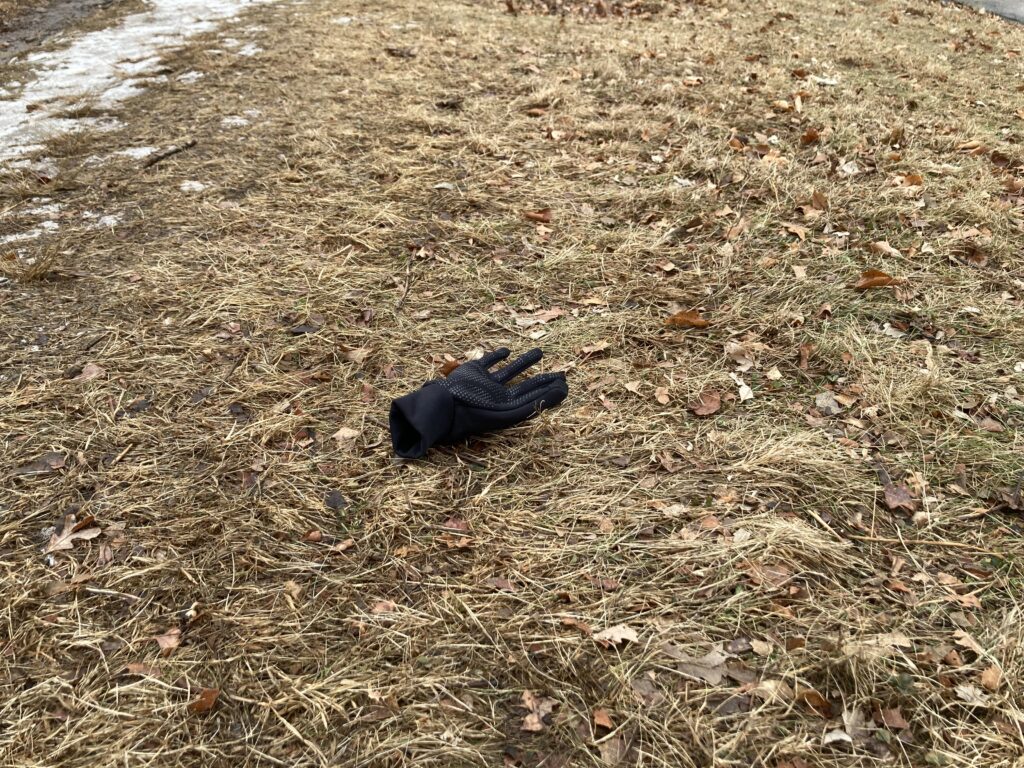5.2 miles
franklin loop
67 degrees
Felt like summer today. Hot! A common refrain: I need to get up earlier and get out there before it gets too warm! Difficult. I can tell that the 2+ week break got me out of cardio shape. My heart rate got higher faster. I’m sure the heat had something to do with it too. After a mile, I decided to switch from 9/1 to walking every time my heart rate went above 170, then running again when it went down to 135. A did a lot of walking.
At first, I listened to the traffic and the kids at the church daycare and my feet, but after a few miles, I put in my shadows playlist — if I could find the shadows on the path, I’d find them in the music!
From the Franklin bridge the river was beautiful — so many sparkles. I noticed a few sandbars just below the surface. No rowers. They were probably here earlier in the morning — another reason to get up and run early!
I smelled the flowers — a hint of Big Red cinnamon gum. Heard the birds and construction trucks backing up. Gave attention to the grass, filled with clover and dandelions. At the end, nearing the corner of my block, I watched the shadows of leaves dancing on the grass and dirt — a big patch that was more dirt than grass. Ants? We have several of those in our backyard.
As I looked at the grass and thought about the blade and the sheath, I remembered/realized something: I can’t really see individual grass. Not enough cone cells for that. I write really because I can sometimes see an individual leaf, but just barely, and more the idea that there’s a blade, but definitely not the sheath.
I forgot to post this earlier: I stopped at the sliding bench, noticed how much green there was, and decided to take a picture in order to compare it to a pre-green picture:
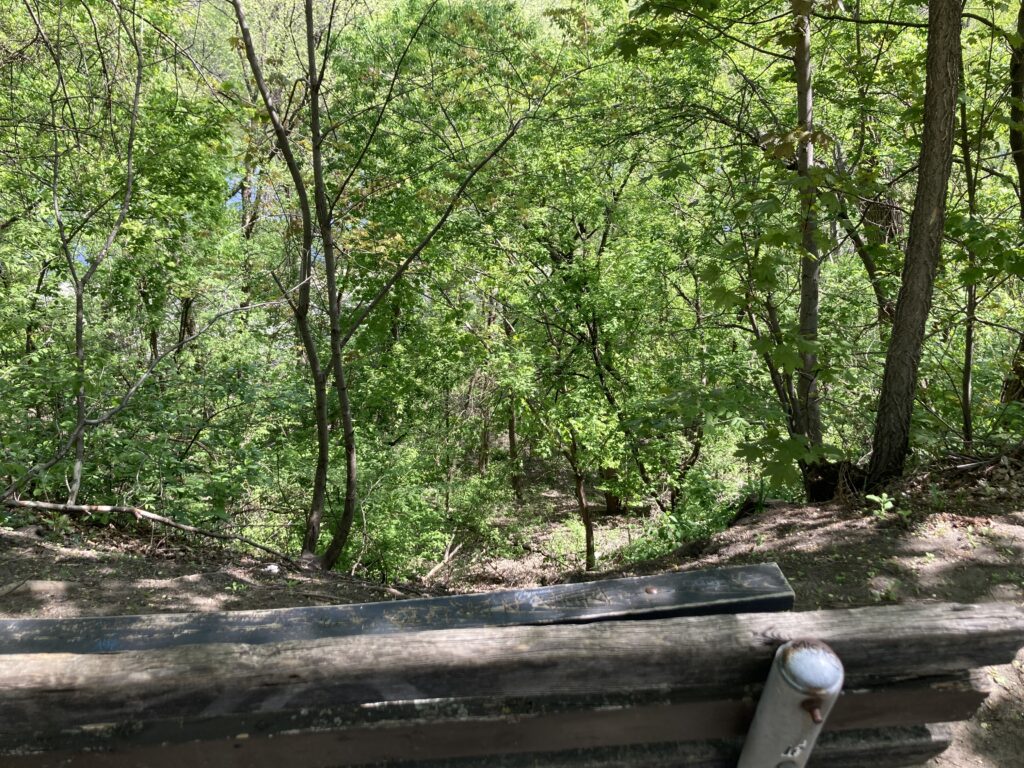

grass roots and astroturfing
Looking through my Plague Notebook, Vol 25 notes from yesterday, I saw this: grass roots — origins of the phrase. So, I looked it up and found this on wikipedia:
A grassroots movement is one that uses the people in a given district, region or community as the basis for a political or continent movement. Grassroots movements and organizations use collective action from volunteers at the local level to implement change at the local, regional, national, or international levels. Grassroots movements are associated with bottom-up, rather than top-down decision-making, and are sometimes considered more natural or spontaneous than more traditional power structures.
*
The earliest origins of “grass roots” as a political metaphor are obscure. In the United States, an early use of the phrase “grassroots and boots” was thought to have been coined by Senator Albert Jeremiah Beveridge of Indiana, who said of the Progressive Party in 1912, “This party has come from the grass roots. It has grown from the soil of people’s hard necessities”.
In the entry, it also mentioned astroturfing, which is an organization that presents itself as grassroots, but is really lead by an outside organization/corporation.
Astroturf — I wanted to find the origins of this term:
The synthetic grass product that eventually became known as AstroTurf® was originally designed as an urban playing surface meant to replace the concrete and brick that covered the recreation areas in city schoolyards. During the Korean War, the U.S. Army had found urban recruits to be less physically fit than rural recruits. Attributing this to lack of green space in cities, the Ford Foundation funded research for Monsanto to create a synthetic grass replica in 1962. It had to be wear-resistant, cost efficient, comfortably cushioned, and traction tested. Two years later employees of the Chemstrand Company, a subsidiary of Monsanto Industries, developed a synthetic surface called ChemGrass and installed it at the Moses Brown School, a private educational facility in Providence, Rhode Island.
Astroturf: The Story Behind the Product
What is the Grass?/ Mark Doty
On the margin
in the used text
I’ve purchased without opening
—pale green dutiful vessel—
some unconvinced student has written,
in a clear, looping hand,
Isn’t it grass?
How could I answer the child?
I do not exaggerate,
I think of her question for years.
And while first I imagine her the very type
of the incurious, revealing the difference
between a mind at rest and one that cannot,
later I come to imagine that she
had faith in language,
that was the difference: she believed
that the word settled things,
the matter need not be looked into again.
And he who’d written his book over and over, nearly ruining it,
so enchanted by what had first compelled him
—for him the word settled nothing at all.
I’m with Whitman. How boring it would be if the word settled everything!
